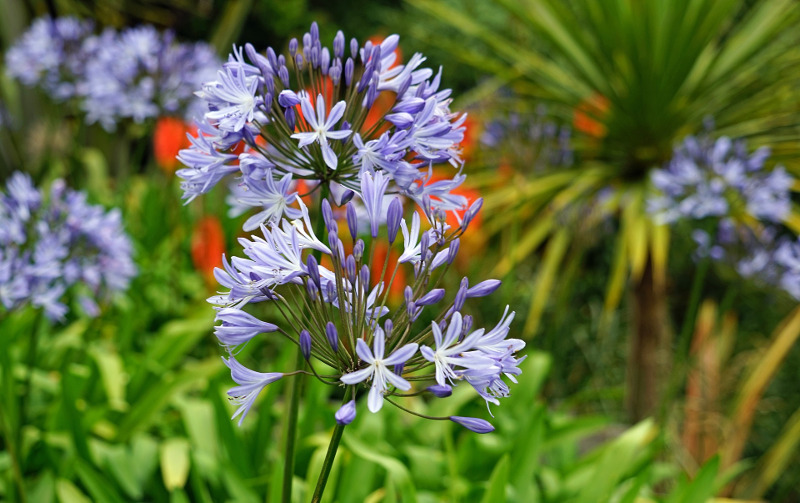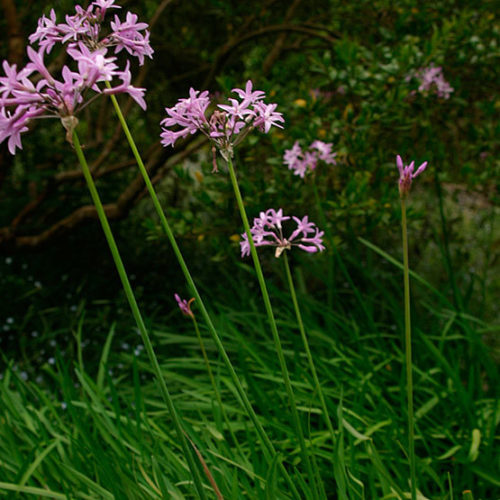Seasonal Agapanthus Care: Preparing for Winter and Summer season
Seasonal Agapanthus Care: Preparing for Winter and Summer season
Blog Article
Unleashing the Secret to Effective Agapanthus Farming: Idea for a Flourishing Garden
In the world of horticulture, growing agapanthus efficiently calls for a tactical approach that encompasses various elements of plant treatment. By understanding the subtleties of agapanthus farming, one can produce an environment where these plants thrive and flower perfectly.
Planting Agapanthus: Ideal Practices
When planting Agapanthus, proper dirt preparation is crucial for ensuring effective growth and growth of these attractive blossoms. Agapanthus, generally called Lily of the Nile or African lily, grows in well-draining dirt with a slightly acidic to neutral pH degree - Agapanthus. Before growing, it is vital to amend heavy clay soils with raw material such as garden compost or peat moss to improve water drainage and supply vital nutrients for the plants
To grow Agapanthus, select a location that gets full sunshine to partial color, as this will advertise healthy development and bountiful flowering. Dig an opening two times the diameter of the plant's origin sphere and position the Agapanthus at the exact same deepness it was previously expanding. Gently backfill the opening with soil, weighing down securely to remove any type of air pockets around the origins.
Water the freshly grown Agapanthus completely and remain to keep the soil uniformly moist, specifically during the plant's energetic growing period. Agapanthus. Applying a balanced plant food once a month can better sustain the plant's development and blooming. By adhering to these best practices for growing Agapanthus, you can produce a sensational display screen of these captivating flowers in your yard
Perfect Soil Conditions for Agapanthus
For optimal growth and flowering success of Agapanthus plants, making sure the soil conditions are excellent is essential. Agapanthus flourishes in well-draining soil with a somewhat acidic to neutral pH level varying from 6.0 to 7.0. This sort of dirt permits ample water drain, avoiding waterlogging which can lead to root rot. To enhance dirt water drainage, consider including raw material such as garden compost or peat moss when preparing the growing site. Furthermore, Agapanthus chooses soil that is rich in nutrients, so incorporating a balanced fertilizer throughout the growing season can advertise healthy growth and dynamic blooms.

Watering and Fertilizing Tips
To guarantee healthy development and dynamic flowers, correct watering and fertilizing methods are vital for effective Agapanthus growing. Agapanthus plants take advantage of routine watering, specifically throughout the expanding period. It is suggested to water deeply once a week, ensuring the soil is wet however not waterlogged. During warm climate or in pots, even more regular watering might be necessary to prevent the dirt from drying out completely.
When it pertains to feeding Agapanthus, a well balanced fertilizer with equal components nitrogen, phosphorus, and potassium can be used in the spring to promote healthy and balanced growth More Info and flowering. Slow-release plant foods are excellent for giving nutrients slowly over an extended period. Avoid over-fertilizing, as this can result in excessive foliage development at the expenditure of blooms.
Furthermore, including raw material like garden compost into the look here soil can boost nutrient degrees and boost soil structure, helping in the general health of the Agapanthus plants. By adhering to these watering and feeding ideas, garden enthusiasts can ensure their Agapanthus plants grow and produce stunning displays of blossoms.
Pruning and Deadheading Techniques
Appropriate trimming and deadheading methods play a critical role in maintaining the health and appearances of Agapanthus plants, matching the crucial practices of watering and feeding for successful cultivation. Trimming Agapanthus involves getting rid of invested flower heads, dead or yellowing leaves, and overall shaping of the plant to advertise far better growth. Deadheading, the process of getting rid of discolored blossoms, not only enhances the plant's look however additionally motivates additional growing.
When deadheading Agapanthus, it is advisable to clip off the blossom stem at the base utilizing sharp, tidy shears. This procedure reroutes the plant's energy from seed production back right into origin and foliage development, promoting a healthier and much more robust plant. Regular deadheading can expand the growing duration of Agapanthus and protect against self-seeding, which can cause congestion.
In terms of trimming, Agapanthus usually gain from a light trim after blossoming to clean up the plant and urge fresh development. Cutting back the spent blossom stems and removing any kind of damaged or dead vegetation aids maintain the plant's vigor and overall appearance. Nonetheless, it is important to avoid cutting into the crown of the plant, as this can deteriorate its health.

Protecting Agapanthus From Pests and Diseases
Executing reliable parasite and condition management methods is essential to securing the wellness and vitality of Agapanthus plants in farming. Agapanthus are generally durable plants, yet they can still fall sufferer to various insects and illness if not effectively cared for. One typical parasite that influences Agapanthus is the Agapanthus borer, a caterpillar that tunnels right into the plant, triggering damage to the fallen leaves and flowers. To avoid invasions, normal examination of the plants is essential. If borers are discovered, they can be by hand eliminated, or insecticidal soap can be utilized as a control measure.
In enhancement to insects, Agapanthus are vulnerable to illness such as origin rot and fungal leaf places. By staying watchful and addressing parasite and disease concerns immediately, garden enthusiasts can help their Agapanthus prosper and flourish.

Conclusion
To conclude, effective cultivation of agapanthus calls for appropriate planting strategies, suitable soil conditions, sufficient watering and feeding, routine pruning and deadheading, and protection from diseases and insects. By following these methods and ideas, garden enthusiasts can guarantee a growing garden filled with beautiful agapanthus blooms. Agapanthus. Bear in mind to keep consistent care and focus to information why not check here to promote the health and longevity of these spectacular plants
When growing Agapanthus, proper dirt prep work is crucial for making certain effective development and advancement of these gorgeous flowers.Water the recently planted Agapanthus extensively and continue to maintain the soil evenly damp, especially throughout the plant's energetic expanding period.For optimum development and flowering success of Agapanthus plants, guaranteeing the soil conditions are suitable is critical. When transplanting or planting Agapanthus, ensure the dirt is well-prepared to provide the needed structure for the plants to establish themselves efficiently. One usual bug that impacts Agapanthus is the Agapanthus borer, a caterpillar that passages into the plant, creating damages to the leaves and blossoms.
Report this page